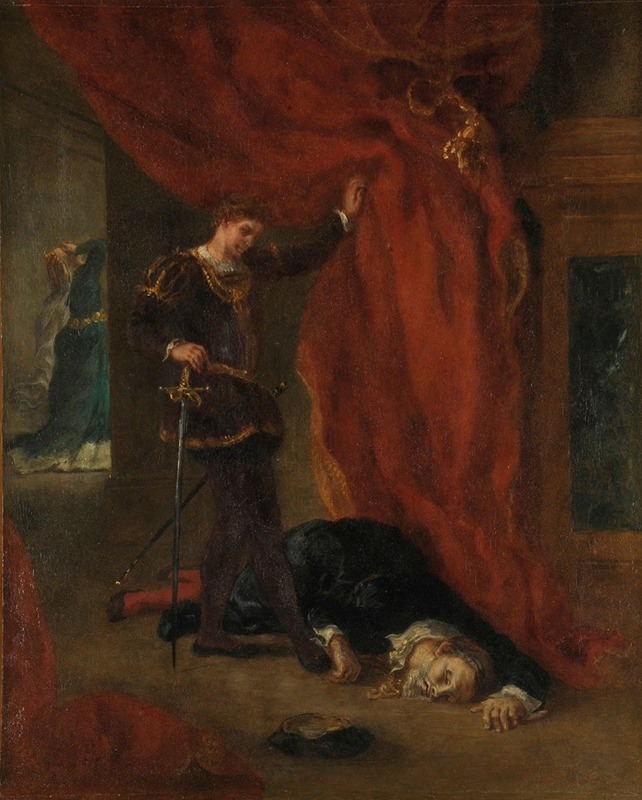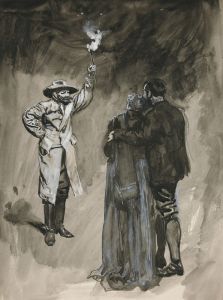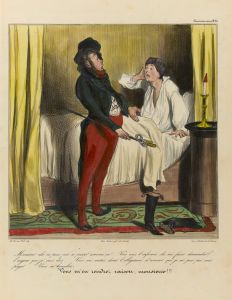
Hamlet devant le corps de Polonius
A hand-painted replica of Eugène Delacroix’s masterpiece Hamlet devant le corps de Polonius, meticulously crafted by professional artists to capture the true essence of the original. Each piece is created with museum-quality canvas and rare mineral pigments, carefully painted by experienced artists with delicate brushstrokes and rich, layered colors to perfectly recreate the texture of the original artwork. Unlike machine-printed reproductions, this hand-painted version brings the painting to life, infused with the artist’s emotions and skill in every stroke. Whether for personal collection or home decoration, it instantly elevates the artistic atmosphere of any space.
"Hamlet devant le corps de Polonius" is a painting by the renowned French Romantic artist Eugène Delacroix. Created in 1835, this artwork is part of Delacroix's series of paintings inspired by William Shakespeare's plays. Delacroix, known for his vibrant use of color and dynamic compositions, was deeply influenced by literature, and Shakespeare's works provided a rich source of inspiration for his artistic explorations.
The painting depicts a dramatic scene from Shakespeare's tragedy "Hamlet," specifically from Act III, Scene IV. In this scene, Hamlet confronts his mother, Queen Gertrude, in her chamber and accidentally kills Polonius, the father of Ophelia and Laertes, who is hiding behind a tapestry. Delacroix captures the moment immediately after the murder, focusing on Hamlet's reaction to the realization of his deed.
Delacroix's interpretation of this scene emphasizes the emotional intensity and psychological complexity of the characters. Hamlet is portrayed with a mix of shock, contemplation, and remorse, reflecting his inner turmoil and the weight of his actions. The body of Polonius lies on the floor, partially obscured, which adds to the tension and drama of the composition. Queen Gertrude is also present, her expression conveying a sense of alarm and disbelief.
The painting is notable for its use of color and light, which are characteristic of Delacroix's style. The artist employs a rich palette, with deep reds and dark shadows that enhance the somber and tense atmosphere of the scene. The use of chiaroscuro, the contrast between light and dark, further accentuates the emotional impact and draws the viewer's attention to the central figures.
Delacroix's "Hamlet devant le corps de Polonius" is part of a broader Romantic movement that sought to capture the complexity of human emotions and the sublime aspects of nature and life. Delacroix, as a leading figure of this movement, often explored themes of passion, violence, and the human condition, which are evident in this painting.
The artwork is housed in the Louvre Museum in Paris, where it is part of the museum's extensive collection of 19th-century European paintings. Delacroix's works, including this painting, have been influential in the development of modern art, inspiring subsequent generations of artists with their bold use of color and expressive brushwork.
In summary, "Hamlet devant le corps de Polonius" is a significant work by Eugène Delacroix that exemplifies his mastery of Romantic painting. Through his vivid portrayal of a pivotal moment in Shakespeare's "Hamlet," Delacroix captures the emotional depth and complexity of the characters, making it a compelling representation of one of literature's most famous tragedies.


















